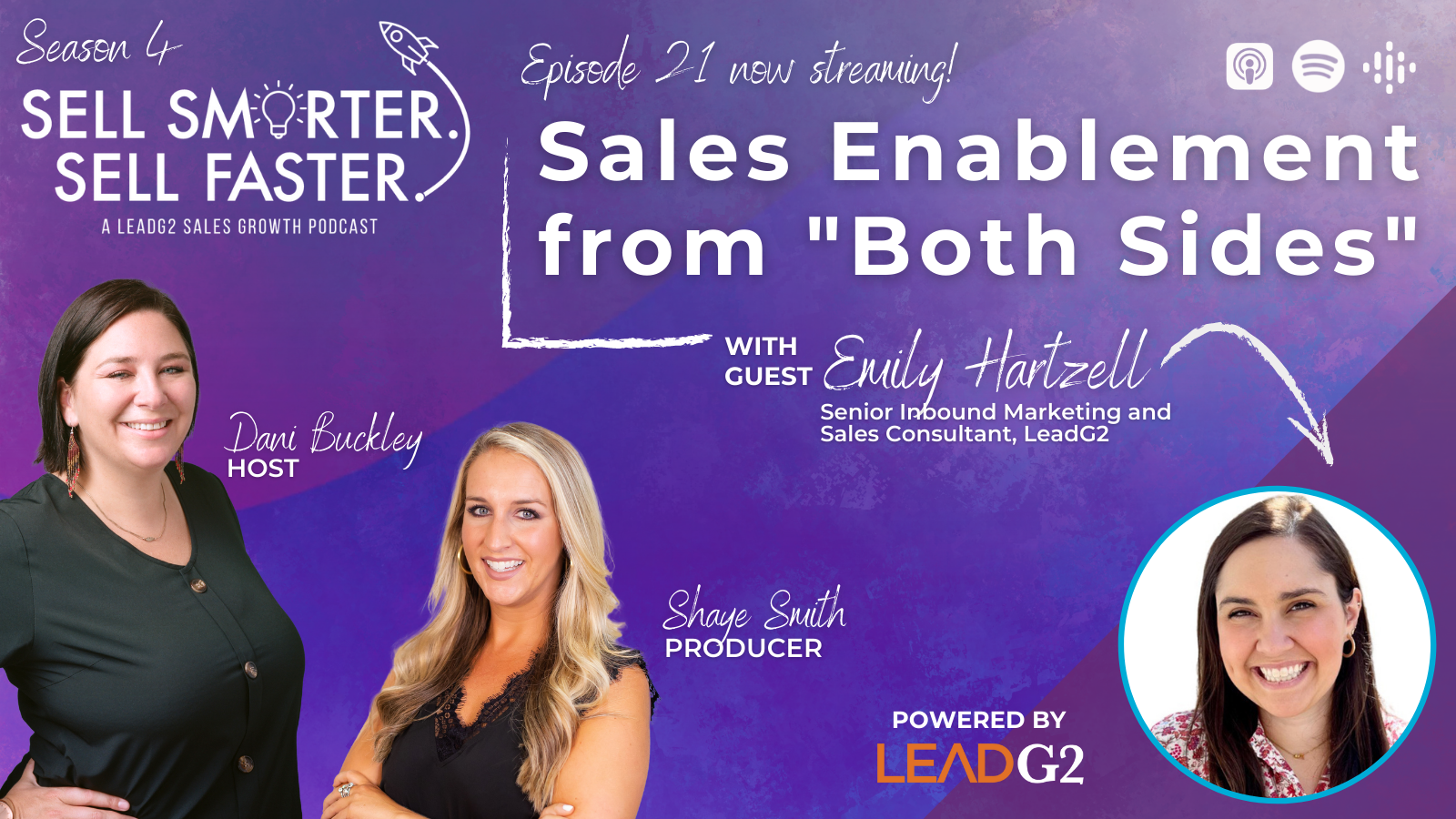Sales Enablement from “Both Sides” with Emily Hartzell
We all know that providing salespeople with the right resources to use at the right times can transform an average sales organization into a...
2 min read
 Emily Hartzell
:
November 23, 2022
Emily Hartzell
:
November 23, 2022


Let's face it — sales enablement tools are more critical than ever. Selling is evolving. Changes in technology and social media have created an online sales environment that often requires interaction in real-time. Today a prospect can ask a question on LinkedIn and get an answer faster than if they called your office.
Sales enablement can be the difference between success and failure in this new environment, but most companies don't do it right or not at all. Let's talk about three specific ways to implement sales enablement at your company and set your team up for success.
It's true; mindset matters.
While you might be working to implement sales enablement tools in your company, don't expect things to change overnight. Salespeople are creatures of habit, so it will take time for them to adopt these new tools and measures. This is where the importance comes in of starting right.
Make sure that everyone in your company knows that this initiative is important and why it's important. This can be done through internal communications and messaging but also through rewards for people who do well.
The reason sales enablement tools are so effective is that they build an organizational framework around customer-facing activities. And that's so important because some of those things are harder to do—like easy case studies, centralization of leadership tools and activities, and making it easy for your team to access the right content at their fingertips.
And, of course, the importance of having a partner that can provide training and support cannot be emphasized enough. All this to say, make sure you select a tool that will help your team thrive!
Sales enablement is a discipline that requires time, attention, resources, and the right tools. That's why it's so important to implement an Enablement program using the right methods at the outset. Make sure that leadership is on board with the tools and that your sales enablement expectations are part of your organizational culture so they succeed. If it is just “another thing they have to do,” it will never get done.
It is one thing to implement sales enablement tools, but it is another to implement them in a way that ensures they are used and appreciated. Make sure that you encourage your team to be accepting and open to change, choose your sales enablement tools wisely, and make sure that it is a part of your culture, and I am confident you will see success.
For additional information about enablement tools, you can check out our LeadG2 resource center!
*Editor's Note: This blog has been updated since its original posting date.

We all know that providing salespeople with the right resources to use at the right times can transform an average sales organization into a...

Sales enablement is quite the buzzword these days, but for good reason. When done effectively, it can have lasting impacts on a sales organization....

New year, new sales goals. As you look at your sales results from last year, you'll want to evaluate your successes, as well as your shortcomings....